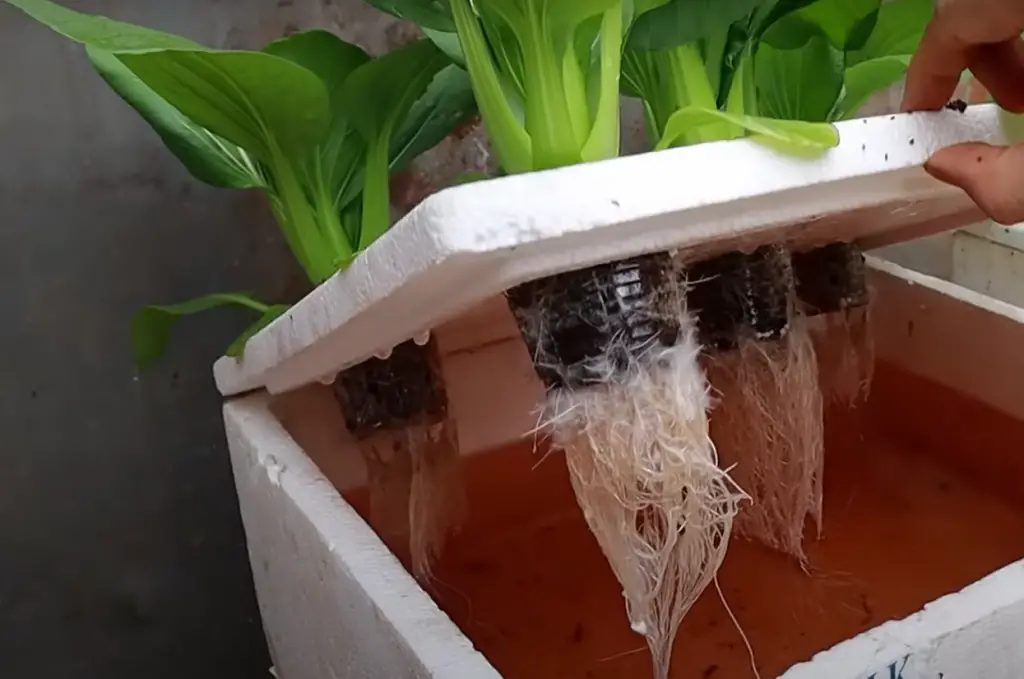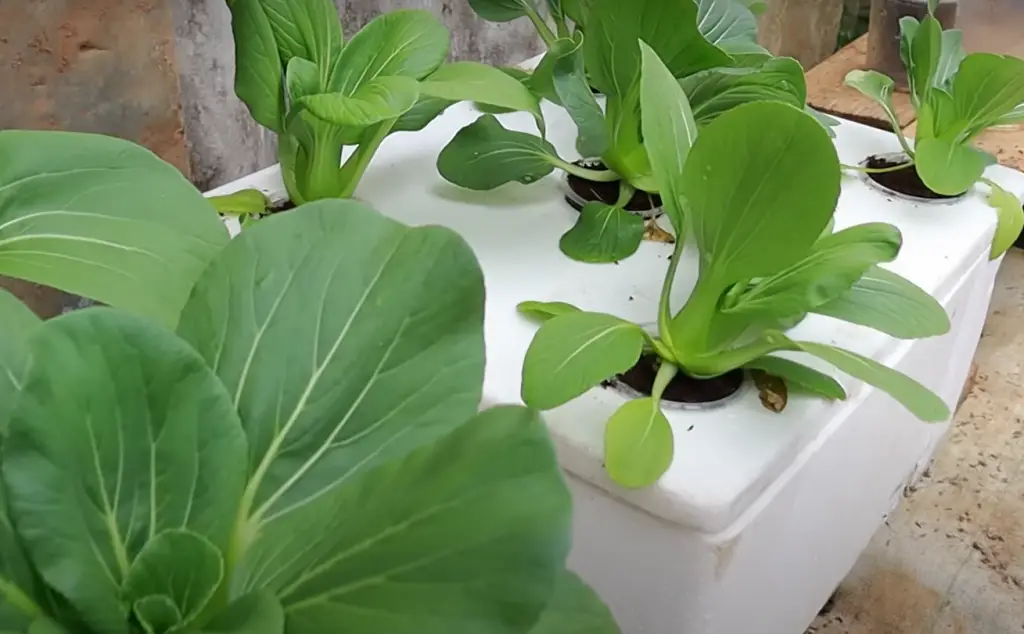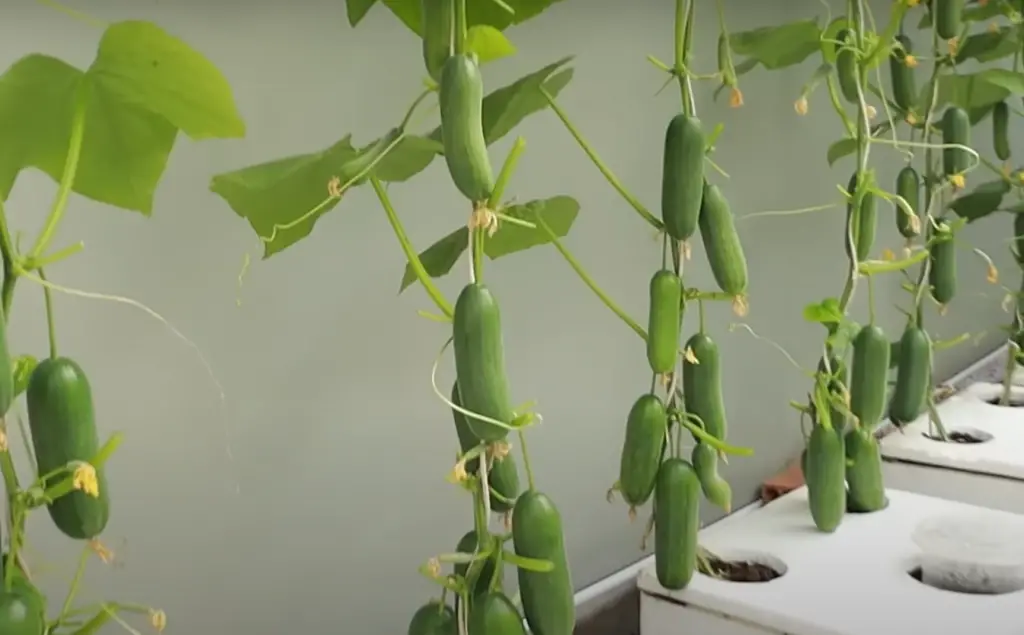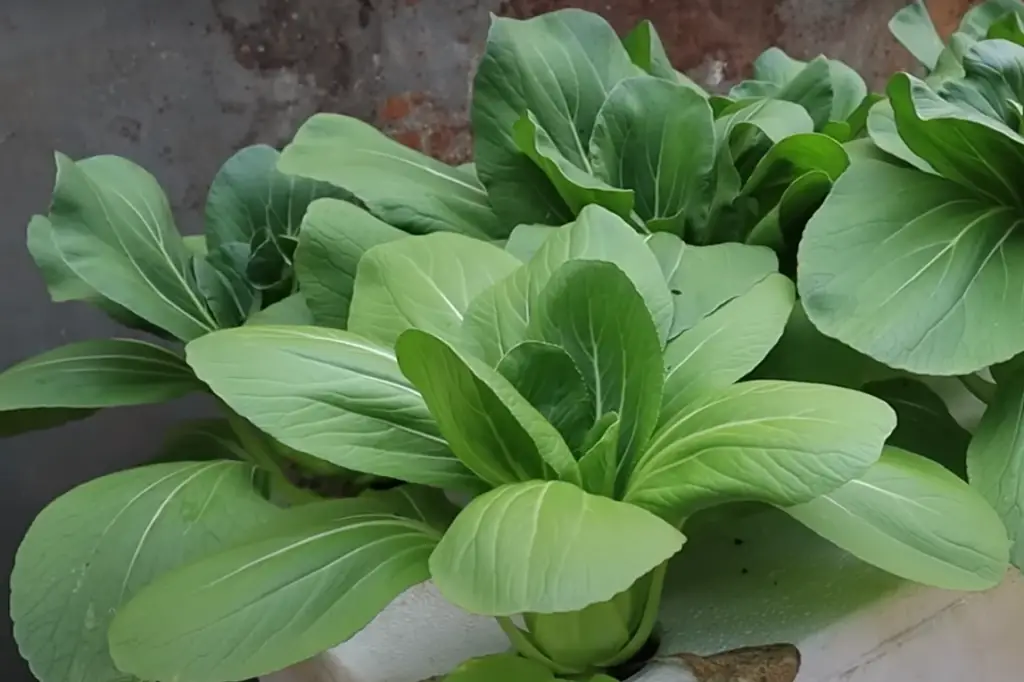Growing vegetables can be a rewarding and cost-effective way to make sure you are getting healthy, nutritious food on a regular basis. But when it comes to selecting the perfect vegetables for your garden, there is a lot of information that needs to be considered. One type that has become increasingly popular in recent years are those which grow along vines. Whether you’re looking for climbing beans or slicing cucumbers, there is an array of produce available that thrive in vine form. From melons and squash to gourds and peppers – the possibilities seem endless! So how do you know what veggies are optimal candidates for well-established vines? Read on to learn more about the best vegetables (and fruits) that can viably flourish under such conditions!
What Are Climbing Vegetables?
Climbing vegetables, also known as vining vegetables, are a type of plant that grows vertically and requires support to thrive. These plants use tendrils, helices, and other adaptations to climb up trellises, walls, and other structures.[1] Popular examples of climbing vegetables include cucumbers, beans, peas, and tomatoes.

Climbing vegetables are particularly useful for gardeners with limited space, as they can be grown in containers and take up less ground space than traditional crops. Additionally, these plants can help to shield and shade other plants, and their vertical growth can make harvesting easier and more efficient. With the right care and support, climbing vegetables can be a fruitful and rewarding addition to any garden.
How Do Vines Climb?
When it comes to growing vegetables on vines, the key is understanding how they climb. Vines use a variety of mechanisms such as tendrils, twining, and long branches to climb up supports, walls, and trellises. [2] Here is a breakdown of the most common climbing strategies:
Tendrils
Tendrils are an important adaptation for many climbing vegetables. These specialized structures enable plants to reach upwards towards the sun and climb towards the sky, but how exactly do they work? Well, tendrils are actually modified leaves or stems that are long, slender, and spiral-shaped. They typically form on the plant at intervals along the stem, and they are often covered in tiny hairs or hooks that allow them to grip onto nearby surfaces. As the plant grows, the tendrils start to curl and twist, searching for something to latch onto. [3] Once they find a suitable supporting structure, the tendrils wrap themselves around it tightly and hold on for dear life as the plant continues to climb upwards. By understanding the role of tendril structures in these plants, gardeners can better support and nurture their climbing vegetable crops, ultimately producing a more bountiful harvest.
Twining stems
Twining stems are another adaptation found in climbing vegetables. These are long, thin branches that wrap around and cling to any nearby support structures as the plant grows upwards. [4] Twining stems work especially well for plants with strong, flexible stems like pole beans, which can easily twist and curl around whatever is available. Although twining stems cannot grab onto surfaces like tendrils do, they still provide much-needed stability and support for plants as they grow vertically.
Long Branches
Long branches are the third adaptation found in climbing vegetables. These branches are typically quite thick and sturdy, and they often grow in pairs along the stem of the plant.

As they reach outwards towards support structures, these long branches will twine themselves around whatever they can find for extra stability. Long branches are especially useful when growing larger plants like pumpkins or melons, as they provide the weight and structural integrity needed to help them reach their full potential.
Vining Vegetables
Now that you understand the different adaptations found in climbing vegetables, it’s time to look at some of the best vining vegetables for your garden.
Annuals
Annuals are plants that complete their entire life cycle within a single growing season, meaning they will die off in winter and must be replanted each spring.
These veggies all require some form of trellis or support structure in order to thrive,Tomatoes
Tomatoes are a popular summer crop that is well-suited to growing on vines. There are two types of tomatoes that can be grown as climbers: determinate and indeterminate varieties. Determinate tomatoes tend to grow in a bushy shape, while indeterminate varieties will vine outward and require support structures such as cages or stakes. Some popular tomato varieties that can be grown in vine form include ‘Sweet Million’, ‘Beefsteak’, and ‘Brandywine’.
Pole Beans
Pole beans are an excellent choice for growing on vines, and they come in a variety of colors and flavors. Pole beans will need a trellis or other support structure to climb up, but once established, they can produce an abundant harvest with minimal effort. Popular pole bean varieties include ‘Blue Lake’ and ‘Kentucky Wonder’.
Peas
Peas are a cool-season crop that can be grown as climbers. Unlike other vining vegetables, peas do not require any support structures to reach their full potential.

Instead, they use their own tendrils to climb up whatever is available in the garden. They also tend to produce an earlier harvest than other climbing veggies, making them a great choice for those who want an early start on their garden. Popular pea varieties to consider include ‘Little Marvel’, ‘Green Arrow’, and ‘Sugar Snap’.
Cucumbers
Cucumbers are a popular summer crop that can be grown either on the ground or as climbers. Cucumbers produced on vines tend to be longer and straighter than those grown in traditional ways, making them ideal for slicing and pickling. Additionally, vine-grown cucumbers can be harvested earlier than their ground-based counterparts. Popular varieties of climbing cucumbers include ‘Marketmore’, ‘Straight Eight’, and ‘Lemon’.
Squash
Squash plants are perfect for growing on a trellis, as their large leaves and wide stems provide plenty of stability and support. Varieties like zucchini and yellow squash can produce an abundance of fruit when given room to grow vertically. Popular squash varieties that can be grown in vine form include ‘Cocozelle’, ‘Butternut’, and ‘Delicata’.
Pumpkins
Pumpkins are another popular vining vegetable, and they require a sturdy trellis or other support structure to reach their full potential. Pumpkins grown on vines tend to be larger and straighter than those grown in traditional ways, making them ideal for carving or baking. Popular varieties of vine-grown pumpkins include ‘Jack Be Little’, ‘Baby Boo’, and ‘Big Max’.
Perennials
Perennials are plants that grow and produce fruit every year without needing to be replanted. Some of the best perennial climbing vegetables include Scarlet Runner beans, chayote, loofah, Malabar spinach. These veggies all require some form of trellis or support structure in order to thrive.
Scarlet Runner Beans
Scarlet Runner beans are a vigorous climbing bean that produces abundant harvests of pods with bright red and white seeds. These plants can reach heights of up to 15 feet when given proper support, making them an excellent addition to any garden. Popular varieties of Scarlet Runner beans include ‘Scarlet Emperor’, ‘Painted Lady’, and ‘Crimson’.
Chayote
Chayote is an edible gourd that produces abundant harvests of green, pear-shaped fruits when grown on a trellis or other support structure.

These fruits are often eaten raw in salads, but they can also be cooked and used like squash in various dishes. Popular varieties of chayote include ‘Benichu’, ‘Cristalina’, and ‘Tahiti’.
Loofah
Loofah is a common climbing vegetable native to tropical regions in Asia. The large, spongy fruits of this plant can be dried and used as natural scrubbing pads or exfoliating tools when mature. Loofah plants require a sturdy trellis or other support structure in order to reach their full potential. Popular varieties of loofah include ‘Thailand Green’, ‘Coriander’, and ‘Bengal’.
Malabar Spinach
Malabar spinach is another popular climbing vegetable, and it produces abundant harvests of dark green, heart-shaped leaves when grown on a trellis or other support structure. These leaves are often cooked in soups and stews, or eaten raw in salads. Popular varieties of Malabar spinach include ‘Red Stem’, ‘Rasta’, and ‘Tiger’.
Why Do You Need To Train Climbing Plants?
It is important to train climbing plants so that they can grow and develop well.
Additionally, training helps keep the stems from becoming tangled or damaged, which can limit yields and cause health issues for your plants. Finally, training also helps reduce disease pressure by increasing airflow around the plant and allowing for better light penetration. So no matter what type of climbing vegetable you’re growing in your garden, it’s always important to train them for optimal results! [5]How To Train Vines To Grow Vertically
Training vining vegetables to grow vertically is a simple but important step in producing an abundant harvest.
Training Tendril Vines
- Find a suitable space to grow your vegetable tendrils, such as a balcony, garden or trellis. Make sure the soil is well-draining and that there is plenty of sunlight.
- Plant one or more varieties of tendril-vining vegetables in the ground or in containers.
- Attach strings or other supports to the vertical structure you have chosen for the vegetables to climb up on. Be sure to provide enough slack in the strings so that they can be adjusted regularly as growth continues.
- As soon as plants start growing and displaying their tendrils, begin training them to the vertical structure, taking care not to damage the tendrils.
- Once the plants are secured to the structure, they should be given enough support to keep them upright as they grow. This may require tying individual tendrils with string or other materials and/or using additional stakes for extra support.
- Monitor growth regularly and adjust ties or stakes when necessary. Prune away excess foliage or stems that aren’t producing fruit in order to encourage more vigorous production of vegetables along the main stem of the plant.
- Water regularly and fertilize every few weeks with an all-purpose fertilizer according to package directions in order to promote healthy growth and larger yields.
- Harvest regularly when the vegetables are ripe, taking care to pick only what you need in order to ensure a continuous supply of produce throughout the season.

Enjoy your homegrown tendril-vining vegetables!
Training Long Branches
- Begin by selecting a strong healthy vine of the desired vegetable variety such as squash or cucumbers, that is at least 4-6 inches long with good leaves and buds along its length.
- Decide how far apart to space out your plants, depending on which vegetable type you are growing and the size of the area available. When spacing out vines, leave enough room so they don’t get tangled up in each other during growth.
- Place 5-7 stakes around each plant, spaced equally about 12 -15 inches apart from one another, with 8 feet between stakes for longer vines such as squash or melons.
- Tie garden twine around the base of the stakes and spread it out evenly around the plant, making sure to keep at least 8 inches between the twine and the vine.
- As your vines grow, tie them up onto each stake in a spiral pattern, starting from the base of each stake up to 8 feet. This will help train them to grow vertically rather than horizontally and take up less space in your garden.
- Keep an eye on your plants regularly for any signs of disease or pest damage, as well as ensuring that all ties are secure so that they don’t slip off or become too tight against the vine stems.
- Finally, enjoy watching your vertical vegetable garden thrive!
Training Twining Vines
- Choose a pair of strong and healthy vines to twin with each other. Use the same type of vine (e.g. tomatoes, cucumbers etc.), or two different varieties that can be twined together nicely.
- Make sure the supporting trellis is well set up before you start twining the vines together – this could be a wall, fence, or free-standing structure made from wood or metal poles connected by a network of wires or strings. Place the trellis in an area that will get plenty of sunlight and ensure it’s securely fastened to the ground to support your plants as they grow taller.
- Select one vine and gently wrap its stem around the middle part of the trellis. Carefully support it as you secure with a few pieces of twine or wire at regular intervals, ensuring everything is nice and tight.
- Repeat this method to attach the second vine alongside the first one, wrapping it around in an opposite direction to ensure that they are securely bound together.
- Move up the two vines, continuing to wrap them around each other and securing with more twine or wire along their length as necessary. Make sure the two plants remain firmly attached as they grow taller and thicker over time, adjusting your supports if needed.
- Once you’ve reached the top of your chosen trellis, tie off any excess stems so that they don’t interfere with the other vines.
- As your plants grow and start to produce fruit, you may need to adjust or add more supports between them to ensure everything remains secure.
- Cut away any dead or diseased stems as necessary throughout the season, and enjoy watching your twined vegetables growing tall!
Climbing Vine Maintenance Tips
In order to ensure that your climbing vines stay healthy and produce an abundance of fruit, there are a few simple maintenance tips you should follow.
- Water Regularly: Make sure to water your plants on a regular basis, especially during dry periods or hot weather.
- Prune Regularly: Trim away any dead or diseased foliage and keep an eye out for pests and disease so they can be treated quickly.
- Provide Support: Check the ties or stakes regularly to make sure they haven’t become loose or broken, as this can damage the stems of the plant and limit yields.
- Remove Weeds: Keep weeds away from your plants by regularly weeding around them and using mulch to deter new growth.

By following these simple maintenance tips, you can help your climbing vines reach their full potential and produce an abundance of delicious fruit!
FAQ
What is the Most Common Vine Plant?
The most common vine plants are clematis, morning glory, honeysuckle, ivy, and wisteria. All of these plants require plenty of sun and moist but well-drained soil to thrive. They also need a support structure such as a trellis or fence to cling onto while growing.
Will Vines Grow Sideways?
Yes, twining vines are able to climb up and spread horizontally along the ground or a support structure. They use tendrils to wrap around objects for stability and growth.
Do Vines Cause Structural Damage?
While some vines may cause minor damage to walls, fences, and other structures due to their weight or growth habits, it’s usually not enough to cause major structural damage.
What Cannot Be Grown in Vertical Farming?
Vertical farming is suitable for growing most types of fruits and vegetables, but it may not be ideal for some larger plants such as trees. Additionally, vertical farming requires special lighting and climate control systems which can be costly to install and maintain.
Why Do Vertical Farms Fail?
Vertical farms can fail due to a number of reasons such as lack of funding, improper planning and design, inadequate maintenance, or ineffective marketing. Additionally, vertical farms may struggle to compete with traditional farming methods due to the high cost of equipment and supplies needed for successful operation.
Useful Video: 17 Small Flowering Vines For Trellises
Conclusions
Growing veggies from vines can be a rewarding and delicious addition to your garden. But with so many varieties available, it’s important to research extensively to make sure you are making the best selection for your garden. Consider composting, plant spacing, seed planting depth, water retention and habitat requirements prior to choosing which vegetables you will grow. Think of where you will be planting them: on trellises, up walls or along arbors? Now that you have a better idea of how you can get started with growing vine-based veggies, there is no limit as to what kind of creative kitchen meals you can create! Whether it’s making gazpacho with homegrown cucumbers or whipping up some zucchini fries harvested fresh daily from your backyard – the possibilities are endless. Get ready – the love affair with vines is about to begin!
References:
- https://www.familyfoodgarden.com/climbing-vegetables/#:~:text=Climbing%20vegetables%20are%20trailing%20plants,crop%20by%20planting%20climbing%20vegetables. https://en.wikipedia.org/wiki/Vine
- https://www.theguardian.com/science/2012/aug/30/secrets-climbing-plants-tendrils
- https://www.gardeners.com/how-to/how-plants-climb/5373.html
- https://www.finegardening.com/article/5-great-reasons-to-grow-vegetables-vertically#:~:text=Plants%20grown%20vertically%20have%20the,food%20waste%20due%20to%20rotting.










Leave a Reply
View Comments